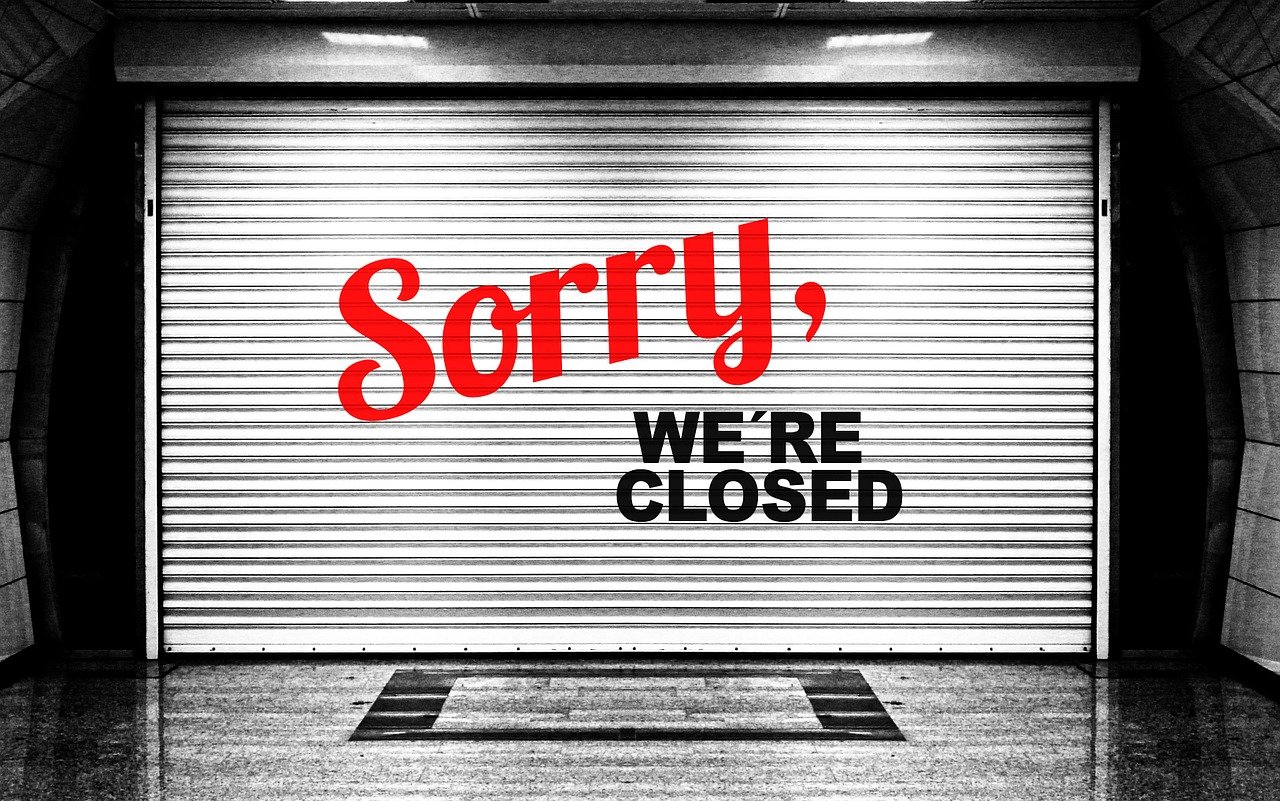Businesses may not always fare as you expect them to for several reasons. Unfortunately, there may come a time when you decide to exit your business. One way to exit business is by closing/shutting down the business. The other is by selling.
Let’s take a closer look at the whys and hows of closing down a business. You can read about selling your business here.
|
Few reasons why your business might close down: |
|
|
|
Now whether you are a partnership firm or a company, there are different legal procedures businesses will have to abide by for closing the business.
Steps to take when closing down your business:
|
A. Dissolution of partnership (If you are in a partnership)
A partnership can be dissolved under the following situations under the Partnership Act, 2020 (1964):
1. By an agreement:
A partnership can end if all partners agree or as stated in the partnership agreement.
2. By a Notice of closure:
If a partnership has no fixed term, any partner can end it by giving written notice to others.
3. A partnership can be dissolved anytime, notwithstanding the agreement, if any of the partners:
- can’t fulfil their duties;
- fails to fulfil their financial obligations;
- transfers their share without consent;
- faces legal action by the court;
- commits fraud; or
- is imprisoned
4. By fixed term of expiry:
If the partnership has a specific term or purpose, it ends when that term or purpose is completed.
5. Immediate dissolution:
A partnership would be immediately dissolved on the death of a partner or their insolvency leads to an immediate end.
Liability to third parties (Unau byakti):
If the dissolution is not made public, all partners remain responsible for any actions taken on behalf of the partnership even after dissolution.
Role of the partners in closing procedure
1. Participation in closing procedure:
Each partner has the right to be involved in the closure process by himself or through an attorney.
2. Continued authority:
Partners still have to complete necessary and obligatory tasks and settle obligations after the dissolution.
3. Settling accounts:
In the course of settling the accounts of a firm after dissolution, the following norms shall be followed:
(a) Convert the estate of a firm into monetary value,
(b) Losses including deficiencies of capital shall be paid firstly out of profits secondly out of capital if it is not sufficient and lastly out of the individual assets of every partner.
(c) The assets of the firm including to make up deficiencies of capital shall be applied in the following manner and order:
- Settle third party debts
- Repay debts that partner(s) owes to the firm
- Pay to partner proportionately what is due on their account of capital, and
- Divide the remaining among the partners on the pre-agreed profit/loss sharing ratio
Instances when a liquidator has to be appointed:
A liquidator may be appointed to oversee closure if there are delays in settling accounts.
Appeal:
A dissatisfied partner can appeal a decision to the Court of Appeal within 35 days of receiving a notice.
B. If you are a company, depending on your debt structure you can choose to close it down either by voluntary liquidation/dissolution (when you can pay the debt) or through compulsory liquidation (when you can’t pay your debt):
At the time a company is solvent i.e. it can pay its own debts, the shareholders of a company can decide to close down the company through a process called liquidation.
It starts by passing a special resolution during a general meeting or by agreeing through the company’s official documents like the memorandum of association, articles of association, or a consensus agreement.
The process of voluntary dissolution
Board of Directors:
The board of directors decides and presents in writing that the company is well to pay off its debts/liabilities and holds a general meeting with the shareholders.
Permission for voluntary liquidation is sought and obtained from the shareholders and the same is submitted to the OCR.
Appointment of liquidator:
a) The next step is appointing a liquidator who is a licensed insolvency practitioner and not affiliated with the company.
b) Within 7 days of the shareholders’ meeting, the company must notify the OCR and Inland revenue Department. The notification should include:
- Resolution of the shareholders’ meeting.
- Name and contact details of the appointed liquidator.
- Statement of assets and liabilities.
- Appointment of the liquidator.
Duties of Liquidator:
File income and expense information to the Office of the Company Registrar (OCR) every six months.
Notify shareholders about the progress of the liquidation process every six months.
- Pay off all the company’s debts and liabilities using its assets and money owed to it.
- Once all debts and liabilities are settled, present a proposal for distributing any remaining assets to the shareholders before a shareholder meeting.
- If approved by shareholders holding at least 75% of shares, make payments to the shareholders from the remaining assets.
- Submit a report to the OCR, including details of money earned from selling assets, payments to creditors, and distributions to shareholders. Include an auditor’s report certifying that the company has been liquidated.
Dissolution:
The liquidator applies to the OCR for the dissolution of the company. The OCR issues a certificate of dissolution, officially terminating the existence of the company.
BUT!
What happens when you are not able to pay off your debts and liabilities?
If you are a company – are you unable to pay your creditors in case your liabilities exceed your assets?
It means you are at a stage of insolvency i.e. you are unable to pay off your creditors and you are termed as being insolvent as per the Insolvency Act, 2063 (2006). If your entity becomes insolvent, insolvency proceedings can be initiated against your company.
Who can apply for insolvency proceedings of a company?
The following persons can apply at the Court for company’s insolvency under the Insolvency Act, 2063 (2006):
- The company itself if it has become insolvent.
- Creditors who have lent money to the company but the creditor must represent at least 10% of the total creditors.
- Shareholders who own at least 5% of the company’s shares
- Debenture-holders who hold at least 5% percent of the company’s debentures.
- A liquidator who has been appointed to liquidate the company.
The process:
a) An application is registered with the court.
b) Court hears the case and decides whether to start insolvency proceedings or not. If accepted, an inquiry officer is appointed.
c) Inquiry officer examines the company’s financial situation and determines:
- If the company needs immediate liquidation or not
- If a restructuring program should be implemented
- If the company is or likely to be insolvent or not
d) Directors must report the company’s financial situation and transactions to the court.
e) The inquiry officer submits an inquiry report to the court within a specified period.
f) Within seven days of receiving the report, the court can make the following orders:
- Immediate liquidation of the company.
- Implementation of a restructuring program.
- Stay of proceedings without liquidation.
- Extension of the insolvency period.
Restructuring:
When a court orders that through a restructuring process i.e. by altering its operational and/or financial structure the company could be able to cope with its financial difficulties, it appoints a restructuring manager.
A restructuring scheme could consist of the following:
- Capitalize the debt of the company and alter the capital structure ;
- Pay the claims of creditors by selling portion of the assets;
- Change the nature of claims it owes and issue securities;
- Encourage creditors to take shares in the company for their due claims;
- To amalgamate with any other company;
- To change the management; or
- To do any such other act which the Court considers appropriate.
Liquidation:
a) Appointment of a liquidator.
b) The liquidator takes control of assets and relieves directors, officers, and employees from their positions and takes care of the following:
- Initiating or defending legal actions on behalf of the company
- Appointing employees for assistance
- Borrowing loans against company assets
- Investigating fraud or deception
- Selling assets and distributing proceeds
- Carrying out all necessary activities to liquidate the company
c) The liquidator prepares and submits progress reports to the court and OCR within three months of appointment.
d) The liquidator calls creditor meetings, forms a creditors committee, and sets deadlines for debt claims.
e) Liabilities are settled according to the order prescribed in the Insolvency Act.
f) At the end of liquidation proceedings, the liquidator prepares and submits a report to OCR on recovered properties, creditor payments, and shareholder distributions.
g) The OCR then strikes the company’s name off the register, cancels its registration, and publishes a notice of dissolution in a national newspaper.














